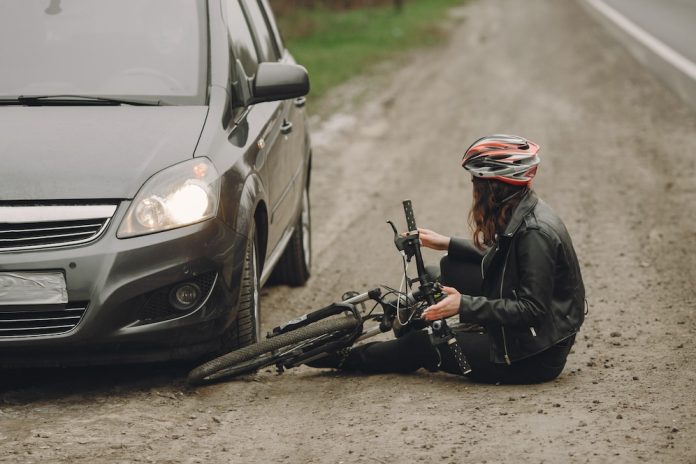It seems like every day one more pedestrian or cyclist is injured or killed in Toronto, In this ongoing problems, the city is experiencing a historic déjà vu:
However, like their earlier cousins, today’s Torontonians also hear banter from police and community leaders:
Cyclists and pedestrians must actively protect their own interests. In other words, cyclists and pedestrians must ultimately build ways to protect themselves — their own — on roads filled with dangerous motor vehicles.
Only the leaders of Toronto have created the unacceptable situation of street politics. Their virtual contract with cars from the 1910s made them politically powerless.
Banning Cars is One Way to Keep Pedestrians and Cyclists Safe on the Streets
The only way to ensure the safety of pedestrians and cyclists on streets currently dominated by motor vehicles is to ban cars. Since the idea is unthinkable, what do elected city officials have left to say or do – other than to clumsily urge people to be careful?
Toronto has understood the ongoing problems and threats that automobiles pose to civic life since the 1910s. They learned about the devastating impact of ruthless motor vehicles on children, as they watched their children die on the streets outside their homes.
City newspapers have described almost daily, and certainly, horribly, that motor vehicles bruised and tore apart “street children”, fractured bones and skulls, stripped skin, and crush them to death.
Dragged and beaten up in their ancestral playground – on the street – besieged Toronto preschoolers, many as young as three had no choice. Protection by government policy never happens.
From Horse to Carriage
This motor trauma was born from a radical change in Victorian streets and their social functions. The streets of Victorian Toronto were organically formed around trolleys, quiet buses, and horse traffic.
Here has flourished a remarkable integrated system of slow outdoor living, combining the whole street, facade with the facade, sidewalk, curb, gutter, and causeway.
Yes, cyclists “burnt” on the newly paved streets of the last century, sometimes knocking adults and children over in the first cases of modernized crashes. , but for the vast majority, this street is safe.
Cars cross intersections, roll on either side of the road, challenge trams and pass them as passengers disembark. They jump off the sidewalk and collide with pedestrians (and buildings).
They run trains at railroad crossings, often swerving off course and, of course, crossing and crashing into cyclists.
Essentially, the space-time compression of fast-moving traffic is difficult for pedestrians and motorists to appreciate, and both – but especially children – find it difficult to adapt to road culture.
Worse still, traffic increased as the population grew by hundreds of thousands of migrants looking for opportunities. Many people waited for public transport, parades to schools, churches, shops, and crowded sidewalks.
As a result, a pedestrian and car crisis is inevitable. And neither the city nor the province knows how to stop a person in front of a moving car, or how to prevent a motor vehicle from hitting a pedestrian.
“Prosperity Chariot”
The real issue from a political point of view is the economic importance of the automobile. Its value is obvious to everyone, especially to politicians and businessmen in Toronto.
The Globe wrote: “The king of vehicles, the motor car has earned its place in the civilized world.” The fact that this exemplary politeness has caused deadly conflicts with pedestrians, including children playing catch or chasing butterflies, is a paradox that cannot be ignored.
So what have Toronto policymakers done to prevent cars from killing children on the streets? Is not. Delegates and petitions to the city council (in 1920 and 1928 respectively) to ban motor vehicles from running on streets where children played were unsuccessful. Result:
Every year from 1927 to 1934, dozens of children died tragically on the streets.
In 1934, after three consecutive years of unscrupulous deaths – 30 toddlers a year – Ontario’s Minister of Highways, Leopold MacCaulay, exclaimed that he “couldn’t help but shudder at… useless separation of children”.
Ironically, misinterpreting his role in the political settlement, MacCaulay felt “it seemed completely unnecessary to ask [drivers] to protect” these children.
Thus, the only alternative policy ever devised to prevent people and cyclists from injury and death on motor roads is the call for self-protection. This includes committing preschoolers, guilty of recklessly playing on dangerously high-speed roads, to a “need to prevent accidents by curbing contributing negligence”, as The Ontario Safety Federation said.
Look Both Ways
As far as we can remember, we looked both ways before crossing the street, which was the only policy of the city armory to prevent people from being run over by cars. It was launched with a tendency to blame non-car drivers for not paying attention to their own safety. Are cars more important than people in Toronto? Arturo Castaneyra / Unsplash
Of course, we know cars are the ultimate cause, but just like “guns don’t kill people; murderers”, just as cars do not kill people; murder drivers. Apparently, like the gun, the car itself is not at fault.
Ban cars from the places where we live. It cannot happen today for the same reasons as it could not happen a century ago:
Cars are more important than pedestrians. Thus, death and injury are inevitable externalities of the car’s modern benevolence. Just as the City of Toronto will not adopt a policy to save the lives of innocent and lovely children who fell hundreds of centuries ago in this ongoing problems, it will do nothing to protect adult cyclists and pedestrians, from many considered urban parasites.









